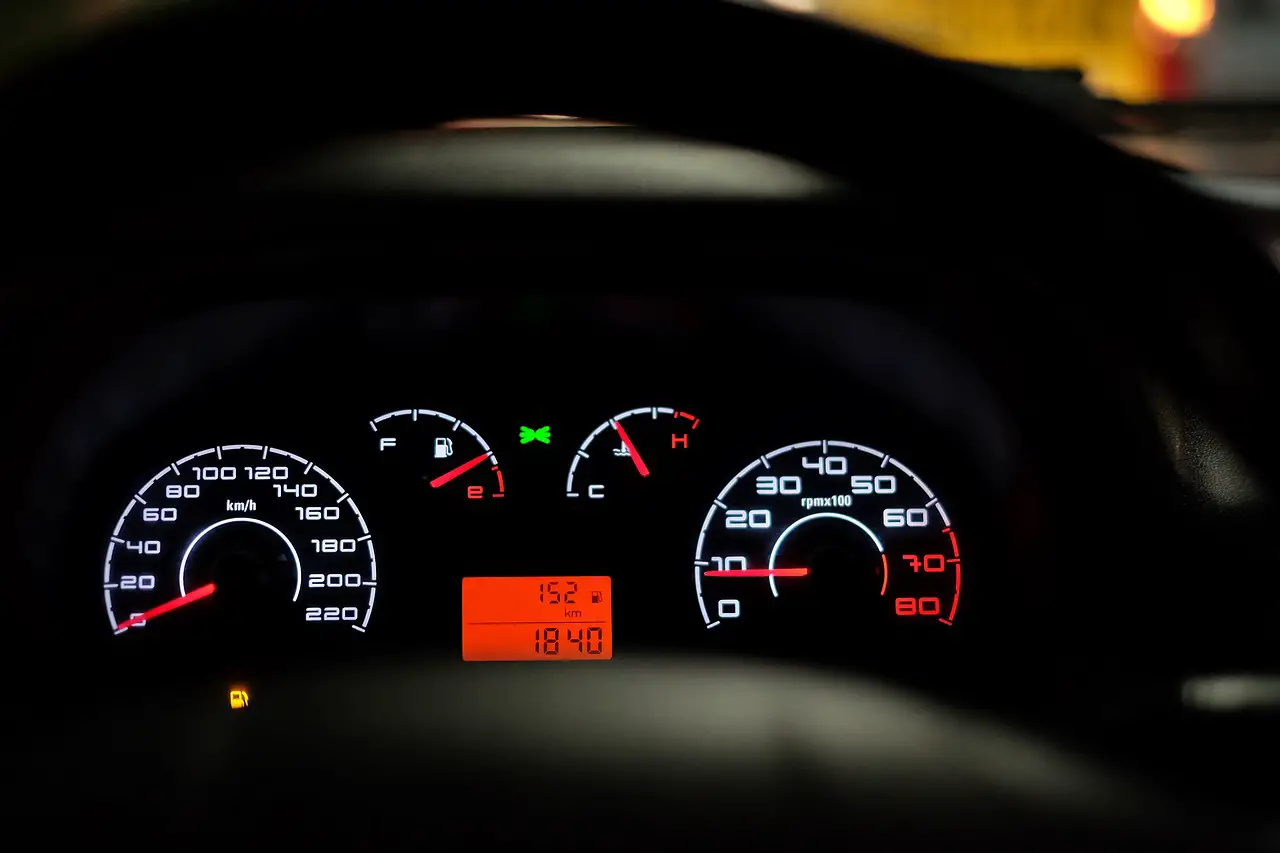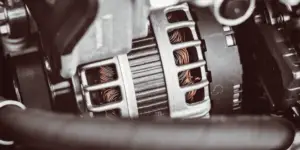
It’s a common problem – you’ve just jump started the car, and all the lights on the dashboard are on. This can be very scary if you’ve never seen this issue before. You may think that there is something wrong or your car is shutting down. But is it just a momentary event while the car resets, or is there something else going on?
If all your dash lights are on after jump starting the car, then it can be anything from a momentary reset to a faulty alternator, or even an issue in the ignition. While some of these may correct on their own, others might require the services of a technician.
In this article, we’ll cover some of the most common causes of persistent dashboard lights after a jump start, and what you can do about them. Let’s get started!
Why Are My Dashboard Lights On After Jump Starting My Car?
When you jump start your car, there are a few reasons why the dash lights will come on. The first and most likely: The car is going through a reset and ‘relearning’ cycle.
A reset and relearning cycle will correct itself fairly quickly, but if the issue is something else, the lights may remain lit, or flicker. If that happens, you may be experiencing one of the following issues:
- A slight surface charge on the battery
- Battery malfunction
- Low voltage
- Charging System Error
- Malfunctioning Alternator
- Problem with Ignition Switch
Some of these can be corrected fairly easily, but others may require a diagnostic, and possibly some replacement parts.
What Can I Do To Fix The Dashboard Lights?
Fixing the dashboard lights takes different steps, depending on the problem. The easiest to deal with are the following:
- Reset and Relearning Cycle
- Slight Surface Charge on the Battery
If these aren’t the problem, issues that usually require parts replacements include:
- Low Voltage
- Charging System Error
- Malfunctioning Alternator
- A Problem With The Ignition Switch
What Do I Do If It’s A Reset and Relearning Cycle?
If the issue is a simple reset and relearning cycle, then it should resolve by itself. Just drive the car as you normally would, and they should go off on their own.
You can also check the specific requirements for your car to see if there’s a way to reset them manually, or contact a professional for assistance if you are concerned.
What Do I Do If It’s a Slight Surface Charge On The Battery?
Slight surface charges can sometimes occur. It’s fairly easy to identify, as the battery usually reads with a higher charge than it would normally have. For example, if your battery is 12.6V but the charge is reading at 12.75.
If this is the case, turn your lights on for a few minutes. This should clear the surface charge and give you a more accurate read on your battery.
If the lights remain on after you’ve drained the surface charge, then it’s probably a reset and relearning cycle, or it may be an issue with low voltage.
What Should I Do If It’s Low Voltage?
A low voltage problem might just mean that you need to finish charging the battery. This error can occur if the battery hasn’t regained a full charge after jump-starting.
If the problem persists, it indicates a problem with other components of the system. Low voltage is usually caused by a faulty alternator, bad battery, or a malfunctioning starter.
To be sure of the cause of low voltage, you’ll need to have a diagnostic done to determine which part of the system is faulty.
How To Determine If You Have a Bad Alternator, Starter, Battery, or Ignition Switch
Aside from the malfunction of the dashboard lights – staying on after a jump start, or flickering – there are signs that can indicate which part of your system is going bad.
Here’s what to look for to identify each of the following malfunctions:
Symptoms of a Bad Alternator:
A bad alternator, or one that’s failing, is usually characterized by the following:
- Trouble starting the car
- Lights dimming or flaring
- A car that frequently stalls
- Whining or screeching when the car starts
Symptoms of a Bad Starter:
A failing starter will usually display the following problems:
- Whirring or grinding sounds when trying to start the vehicle.
- A loud click but no ignition when turning the key.
- Electrical components such as dash panel and radio run, but the car won’t start
- Battery drains or is overcharged on a jump start
Symptoms of a Bad Battery:
After a jump start, you should check your battery as part of the process. However, even if your battery tests all right, early signs of battery failure may include:
- Dim headlights
- Electrical malfunctions
- Visible corrosion on the battery terminals
- Check Engine light is on
- Clicking after turning the ignition switch
- Frequent jump starts required
- The car is slow to start
Symptoms of a Bad Ignition Switch:
While it’s one of the less common issues, a failing ignition switch can also cause the dash lights to all stay on. Signs of this problem include:
- The car refuses to start
- The car starts and stalls
- The car runs for a while, then stalls suddenly
- Difficulty turning the key
- Intermittent light or equipment failures
How to Deal with a Bad Alternator, Starter, Battery, or Ignition Switch
Bad Ignition Switch or Battery
If the problem is the ignition switch or the battery, then the best thing to do is simply replace the part. The battery can be replaced fairly easily, and manually, by any given individual.
The ignition switch should be replaced by a licensed mechanic, as replacing this part requires removing parts of the steering wheel, and working very close to the airbag. If that’s the case, you’ll also want to ask the mechanic to check the ignition fuses as well.
If you choose to repair, both the alternator and the starter can be repaired, provided they are not too damaged and only certain components are broken.
Bad Alternator
Parts that you can replace or service on an alternator include:
- Worn or damaged bearings
- Loose or damaged wiring connections
- Individually worn components
Bad Starter
You can fix starters, at least temporarily, in a few different ways:
- Tap the starter gently to get rid of dead spots and get the engine running
- You may want to replace the starter solenoid
- Check the electrical connections and repair any worn or faulty ones
- On certain models, the starter pinion or flywheel may be damaged and need replacing
NOTE: All of these repairs are possible to do yourself, but it may be better to enlist the services of a licensed mechanic.
Frequently Asked Questions:
How Do I Reset The Dashboard Lights After a Jump Start?
Every make and model of car has a different method for resetting the dashboard lights. However, the most common thing to do is turn off the engine and restart it. If that doesn’t work, try driving for a little while.
Can I Still Drive With A Bad Battery?
While it is possible to drive with a bad battery, you’ll have to jump start the battery frequently, and it may do damage to other components of the engine. The same is true if you suspect you have a bad starter or alternator.
How Far Can I Go With a Faulty Alternator?
With a bad alternator, you can drive a little bit, but it won’t go far. Mechanics suggest that you might be able to go about 25 miles before the car stalls out and dies again.





![What Does An Alternator Warning Light Mean? [ANSWERED] battery-light](https://carzaza.com/wp-content/uploads/2023/12/battery-light-300x150.png)





